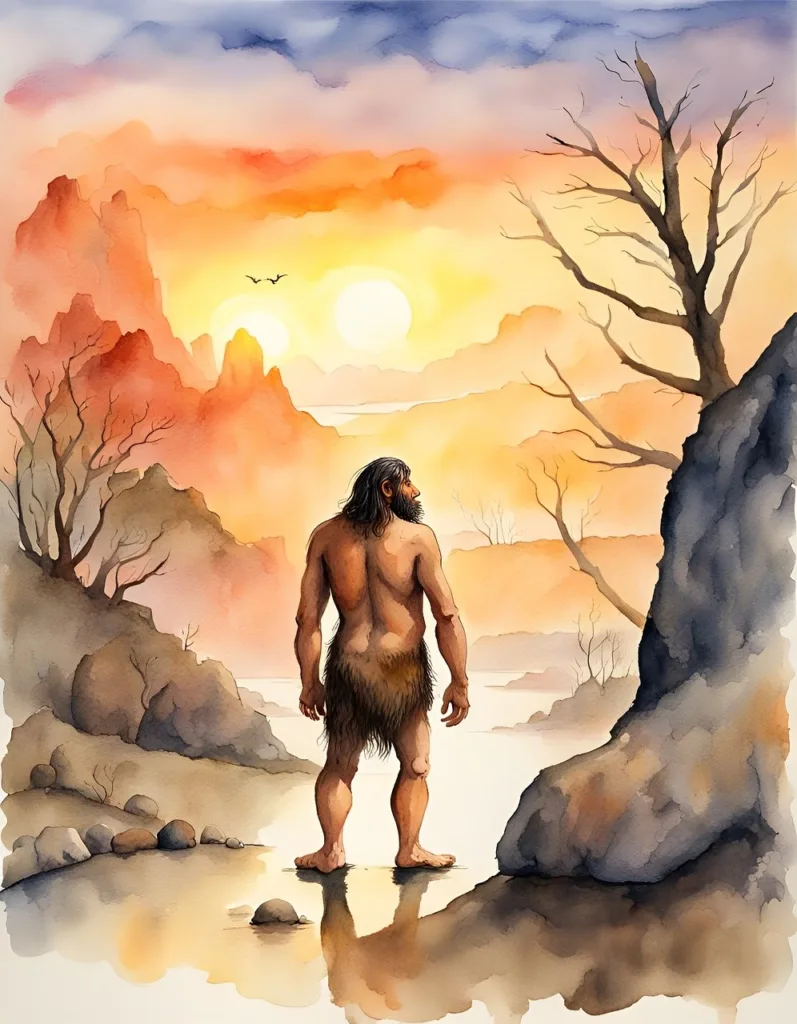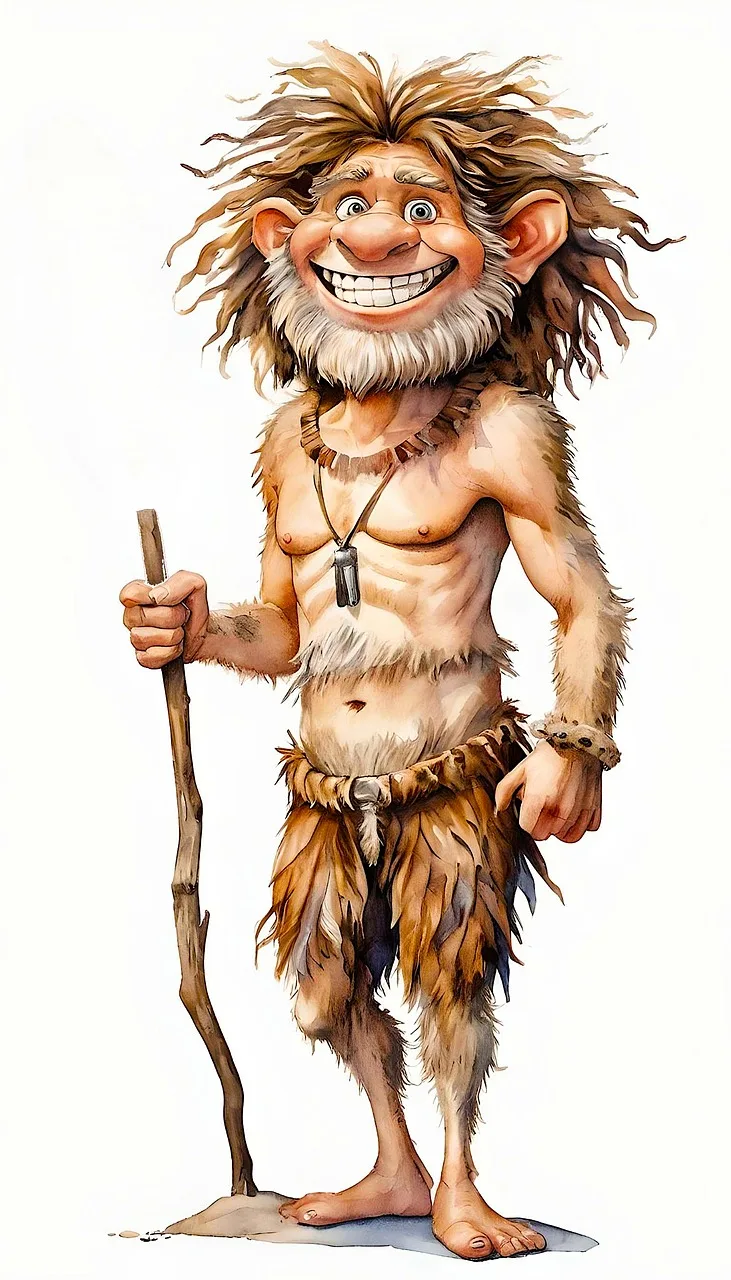Table of Contents
Why did the Neanderthals
Our nearest ancestors, go extinct and humans take over the planet? There is a chance that humans were simply more intelligent, but the evidence for that claim is rather weak.
Neanderthals have large minds, the ability to speak, and advanced tools. They created jewelry and artwork. They were astute, putting forth an intriguing theory. Perhaps the most significant distinctions were not found in each person but rather in our societies.
Neanderthal lands existed throughout Europe and western Asia 2.5 million years ago. The home of Homo sapiens was southern Africa. There are differing estimates, but modern humans may have left Africa around 100,000 years ago.
Humans displaced Neanderthals from Asia and Europe forty thousand years ago. It appears that humans had some advantage, but it was not what it was that would eventually replace them.

Neanderthals were long thought to be simple-minded brutes by anthropologists. But new discoveries in archeology indicate that their IQ was on par with ours.
Fire was mastered by Neanderthals before humans. They were lethal hunters, capturing small wildlife like birds and rabbits as well as large species like woolly rhinos and mammoths.
They collected shellfish, plants, and seeds. To hunt and gather food for all those species requires a profound knowledge of the natural world.
Neanderthals created jewelry and cave paintings demonstrating their appreciation of beauty. They buried their dead with flowers, demonstrating their spirituality.
Cave-dwelling stone circles could represent Neanderthal shrines. Similar to contemporary hunter-gatherers, Neanderthals likely lived superstitious, magical lives, with gods roaming the skies and ancestor-spirits residing in the caves.
Furthermore, it should be noted that Neanderthal and modern humans shared progeny. We weren’t all that dissimilar. But throughout many millennia, humanity encountered Neanderthals numerous times, with consistently negative outcomes. They disappeared from sight. We stuck around.
The society of hunter-gatherers

It’s possible that the main distinctions were more societal in nature than personal. Just as it is hard to understand a honeybee without taking into account its colony, it is also impossible to understand humans in isolation. We value our uniqueness, yet just as a bee’s survival depends on the survival of its colony, so too does our survival depend on bigger social groups.
Our best estimate of the lifestyles of Neanderthals and early humans comes from modern hunter-gatherers. Families are gathered into nomadic bands of ten to sixty individuals by people like the Hadzabe of Tanzania and the Khoisan of Namibia. The bands come together to form a loosely structured tribe that numbers in the thousands or more.
These tribes don’t have hierarchical systems, but they are united by marriages, kinships, friendships, and a common language and religion. Although Neanderthal cultures were comparable, there was one significant difference: they had smaller social groups.
Tight-knit tribes
Evidence that Neanderthals had less genetic variety supports this theory.

Genes are easily lost in small populations. In a group of ten people, one death might eliminate the gene for curly hair if one in ten of them carries it. Five persons in a band of fifty would each have several backup copies of the gene. Thus, tiny populations eventually lose genetic diversity and accumulate fewer genes.
Eleven Neanderthals’ bones and teeth were discovered in a cave in the Siberian Altai Mountains in 2022. DNA from these remains was retrieved. A father and a daughter were among the several relatives; they were members of the same band. Additionally, their genetic diversity was minimal.
We have two copies of every gene since we inherit two sets of chromosomes, one from our father and one from our mother. We frequently have two distinct gene variants. It’s possible that your father gave you the gene for brown eyes and your mother the gene for blue eyes.
But each gene was typically only present in one form in the Altai Neanderthals. According to the study, their low diversity indicates that they were likely a small group of people, averaging no more than 20.
Neanderthal anatomy might have encouraged small groups. Neanderthals were heavier than us because they were strong and powerful. Because each Neanderthal required a greater amount of food, fewer Neanderthals than modern humans could be supported on the land.
Neanderthals may have been primarily carnivorous. Again, smaller numbers would result from meat-eaters receiving fewer calories from the land than individuals who ate both meat and plants.
Group size is important.
We might have benefited if humans had lived in larger groupings than Neanderthals did.
Strong and proficient with spears, Neanderthals were probably formidable combatants. Light-built humans most likely countered by launching close-quarters attacks with bows.
Even though Neanderthals and humans were equally lethal in combat, humans could bring more fighters and endure greater losses if they also had a numerical edge.
Subtle benefits are also enjoyed by large communities. Brains are found in larger bands. More intellect to solve puzzles, retain knowledge about flora and fauna, and master the arts of toolmaking and stitching. Large groupings will have a greater diversity of ideas, just as they would have a higher genetic diversity.
More connections result from having more people. Metcalfe’s Law states that the number of connections in a network grows exponentially with network size. Sixty persons have 1770 possible links between members, compared to twenty people in a band with 190 possible connections.
Via these links, information is sent about human and animal movements, about toolmaking methods, and about language, songs, and mythologies. In addition, the behavior of the group gets more intricate.
Think about ants. Ants aren’t very intelligent on their own. However, interactions between millions of ants enable colonies to kill animals that are much larger than ants, build intricate nests, and search for food. Similarly, human organizations do feats that a single individual cannot: they develop automobiles and buildings, create complex computer programs, wage wars, govern nations, and operate businesses.
Humans are not the only animals with large brains (elephants and whales also possess large brains) or large social groups (zebras and wildebeest form enormous herds). But the way we combine them sets us apart.
No man, and no Neanderthal, is an island, to use the words of poet John Dunne. All of us are a part of a greater whole. Humans have always gathered into ever-larger social organizations, including cities, nation-states, bands, tribes, and multinational alliances.
The advantage that Homo sapiens had over previous hominin species and the natural world may have come from their capacity to create extensive social institutions.
read also : Astonishing Error 200-Year-Old Law of Physics Discovered
One Extremely Human Quality May Help Explain Why Neanderthals Went Extinct (msn.com)


2 thoughts on “One Exceptional Human Traits Could Explain Why Neanderthals Died Out”